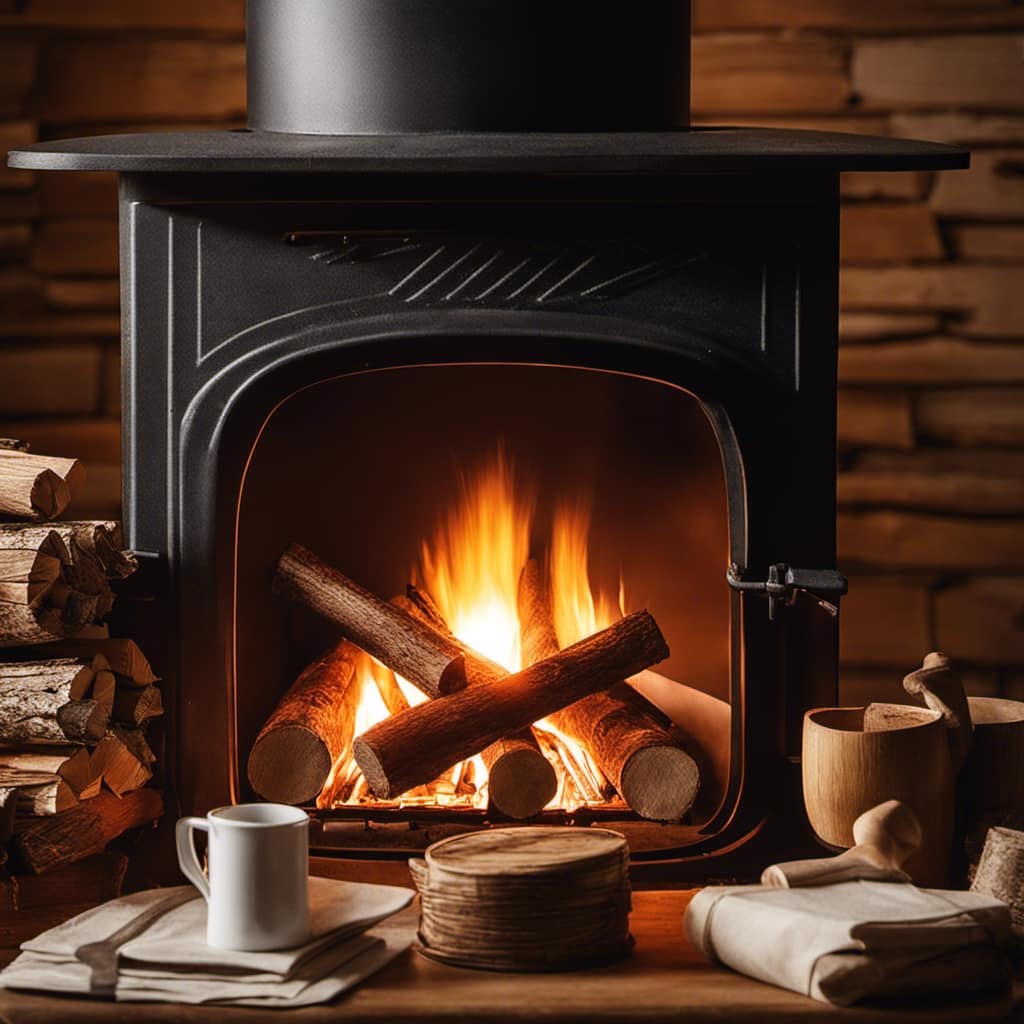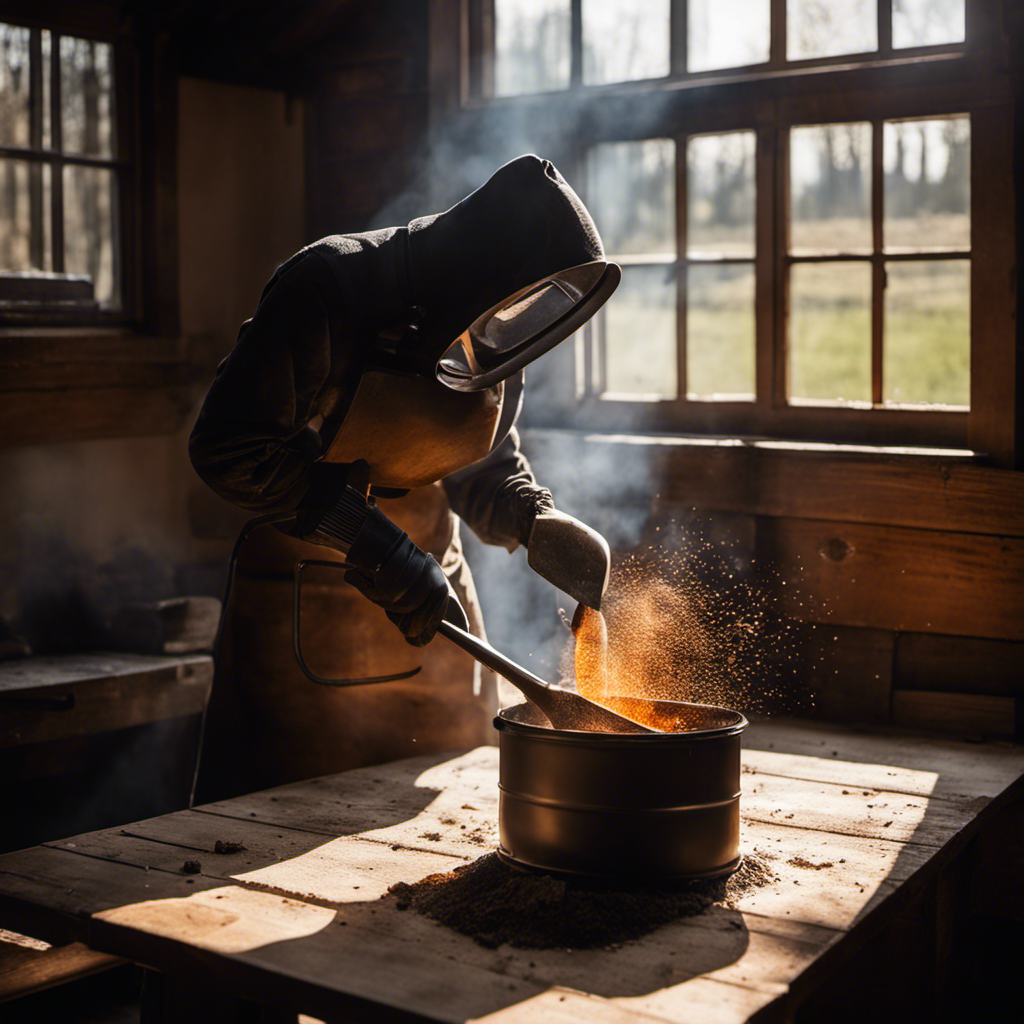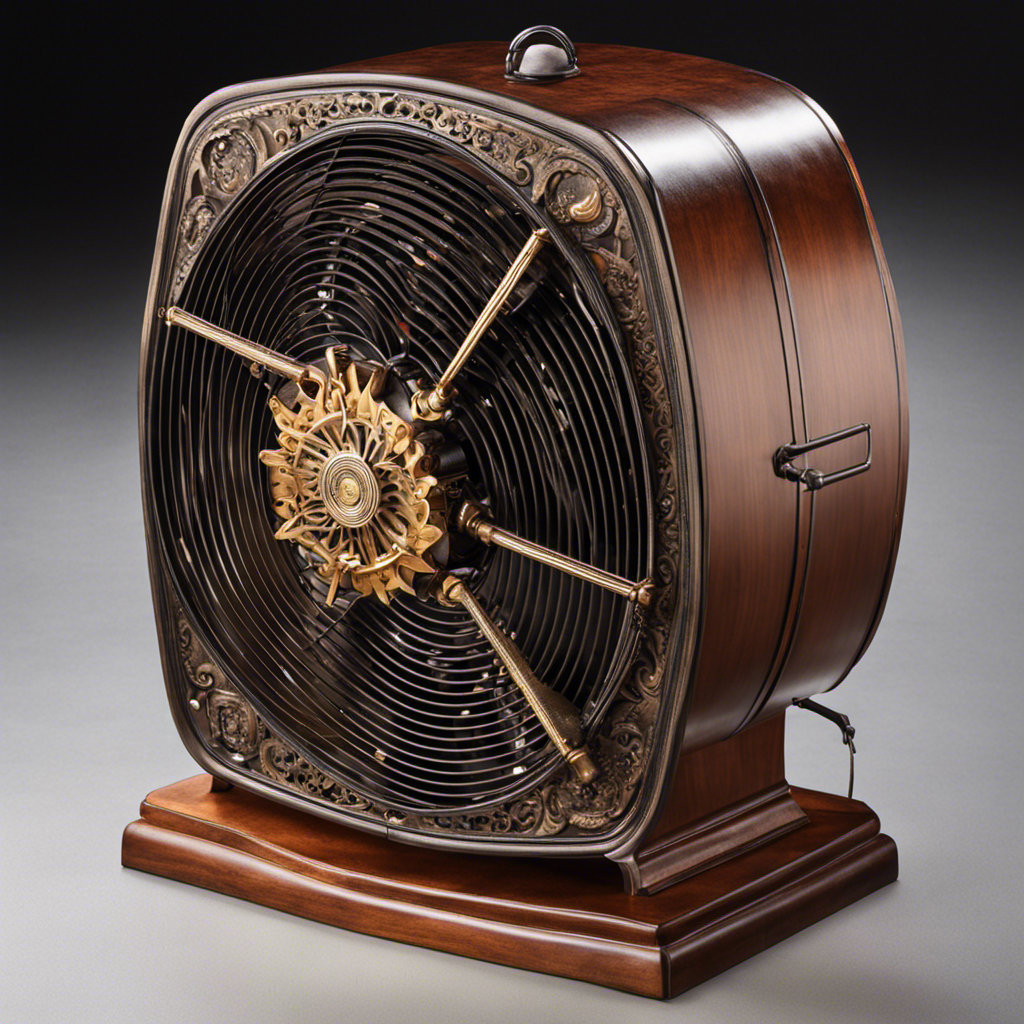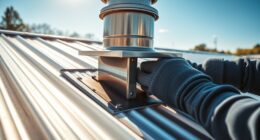As a long-time user of wood stoves, I have experienced frustrating downdrafts more times than I’d like to admit. The way these downdrafts sneak in, cooling the room and putting out the warm fire, can be disheartening for anyone.
But fear not! I’ve gathered a wealth of knowledge and techniques to put an end to those pesky downdrafts.
In this article, I’ll share with you my secrets for stopping the cold air in its tracks and keeping your wood stove burning bright.
Key Takeaways
- Proper ventilation and airflow are crucial for preventing downdrafts in a wood stove.
- Choosing an efficient wood stove that is EPA-certified and properly venting it can help prevent harmful gas buildup.
- Regular maintenance, including cleaning the chimney and flue, is essential for optimal stove performance and reduced fire risk.
- Combining wind blocking techniques with proper ventilation adjustments can help maintain a steady flow of air and prevent downdrafts.
Understanding the Causes of Downdrafts
I’ve been researching the causes of downdrafts and found that a majority of them occur due to a lack of proper ventilation.
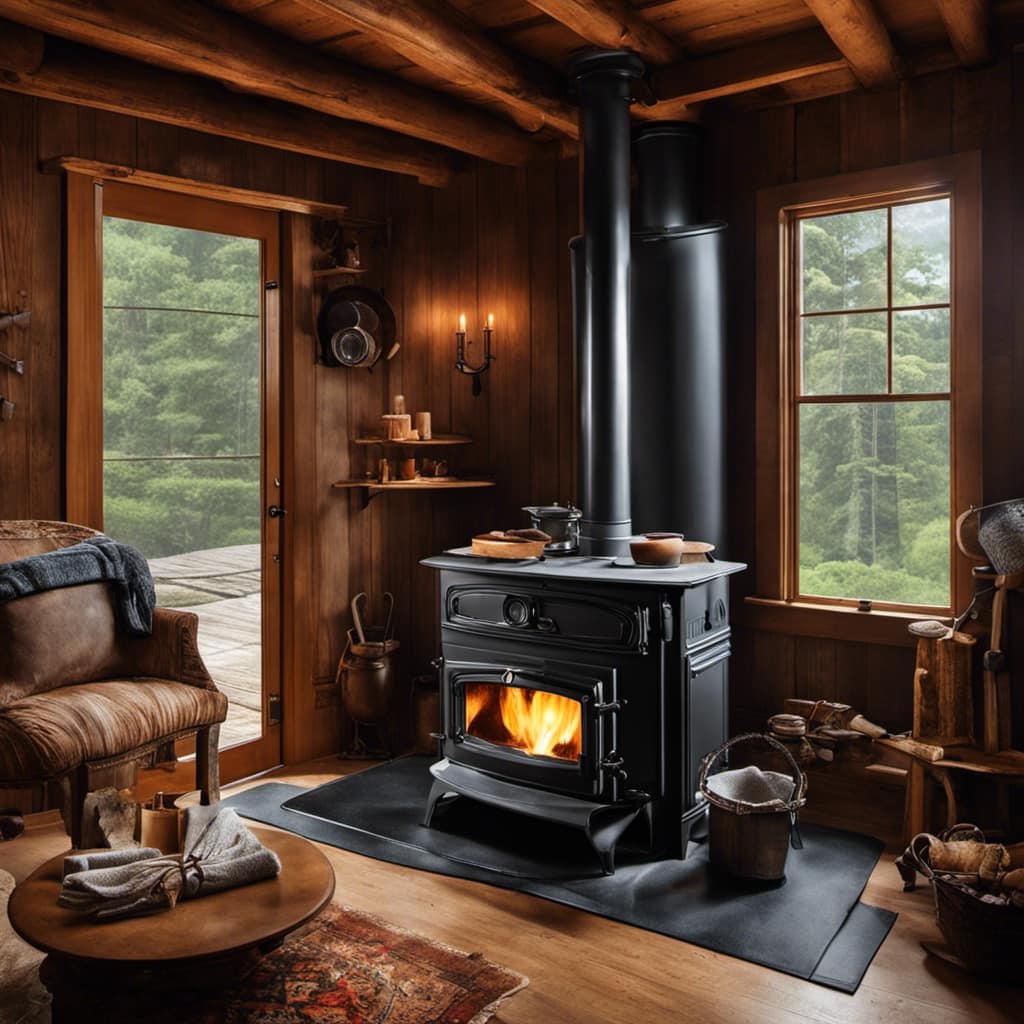
Common downdrafts can occur when there’s an imbalance between the air being drawn into the wood stove and the air being expelled. This can happen when the chimney isn’t tall enough or if there are obstacles such as nearby trees or buildings affecting the airflow.
Another cause of downdrafts is when the chimney isn’t insulated properly, leading to cooler air inside the chimney which can create a reverse airflow.
To prevent downdrafts, strategies can be implemented such as ensuring the chimney is the correct height, installing a chimney cap to prevent wind from entering, and insulating the chimney to maintain a consistent temperature.
Proper ventilation is crucial in preventing downdrafts and ensuring the efficient operation of a wood stove.
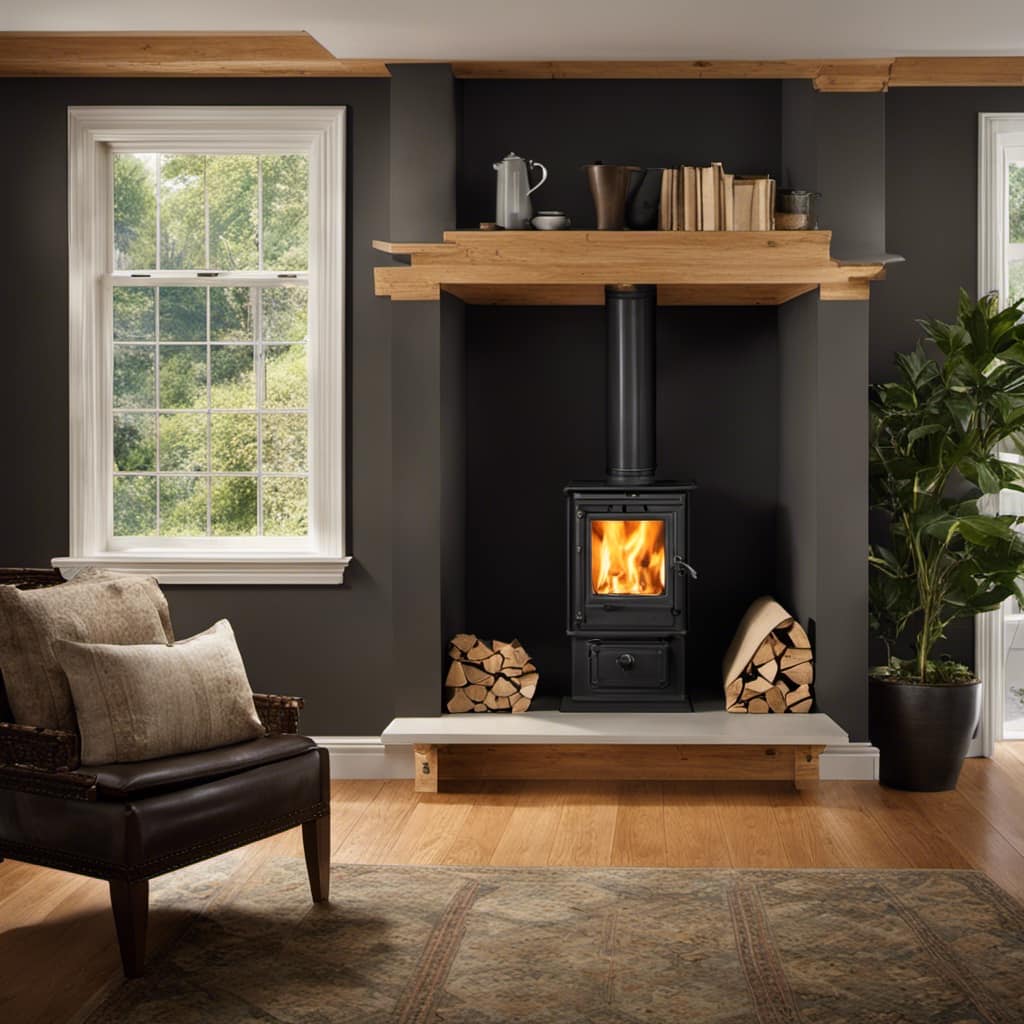
Evaluating Your Wood Stove Setup
I need to assess if my wood stove setup is efficient and safe by checking for any potential issues or improvements that can be made.
One important aspect to consider is choosing an efficient wood stove. This can greatly impact the overall performance and heat output of the stove. Look for models that are EPA-certified, as they adhere to strict efficiency and emissions standards.
Additionally, improving indoor air quality is crucial. Make sure your stove is properly vented to prevent the buildup of harmful gases like carbon monoxide. Regularly clean and maintain your stove, including the chimney and flue, to ensure optimal airflow and minimize the risk of fires.
Essential Ventilation Adjustments
Ventilation control and airflow optimization are crucial for efficient and safe wood stove operation. To achieve proper airflow, start by checking the air intake and chimney damper. The air intake should be open enough to allow sufficient oxygen for combustion, while the chimney damper should be fully open to allow the smoke to escape.
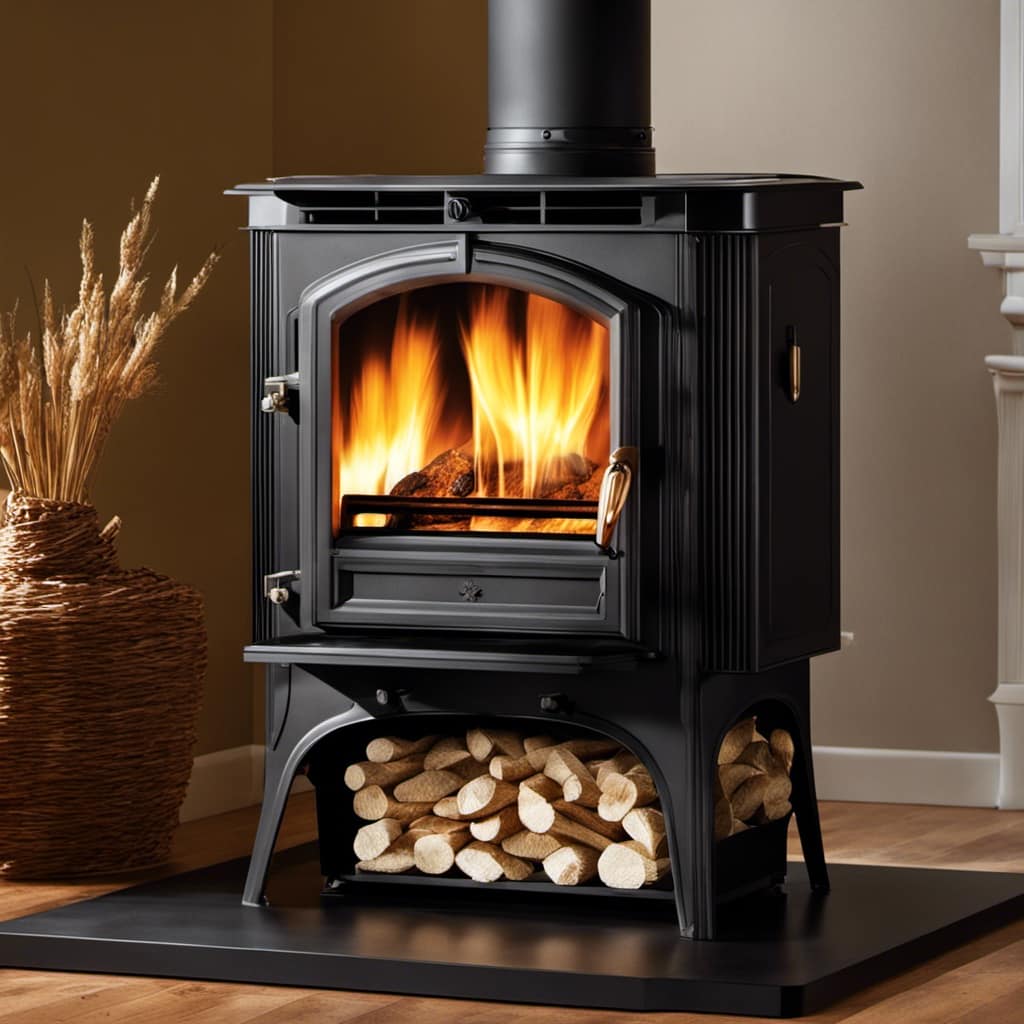
Additionally, consider installing a damper or draft regulator in the stovepipe to further control airflow. This device can be adjusted to regulate the amount of air entering the stove, preventing excessive drafts or smoke backflow.
Regularly clean the chimney to remove any blockages that could impede airflow. By implementing these essential ventilation adjustments, you can ensure proper airflow in your wood stove setup, maximizing its efficiency and minimizing potential hazards.
Utilizing Wind Blocking Techniques
While utilizing wind blocking techniques is essential for optimizing the performance of a wood stove, it’s important to ensure proper ventilation adjustments are also in place.
When it comes to dealing with wind, one effective method is using a wind deflector. This device is installed on the chimney to redirect the wind away from the stove, preventing downdrafts and maintaining a steady flow of air.
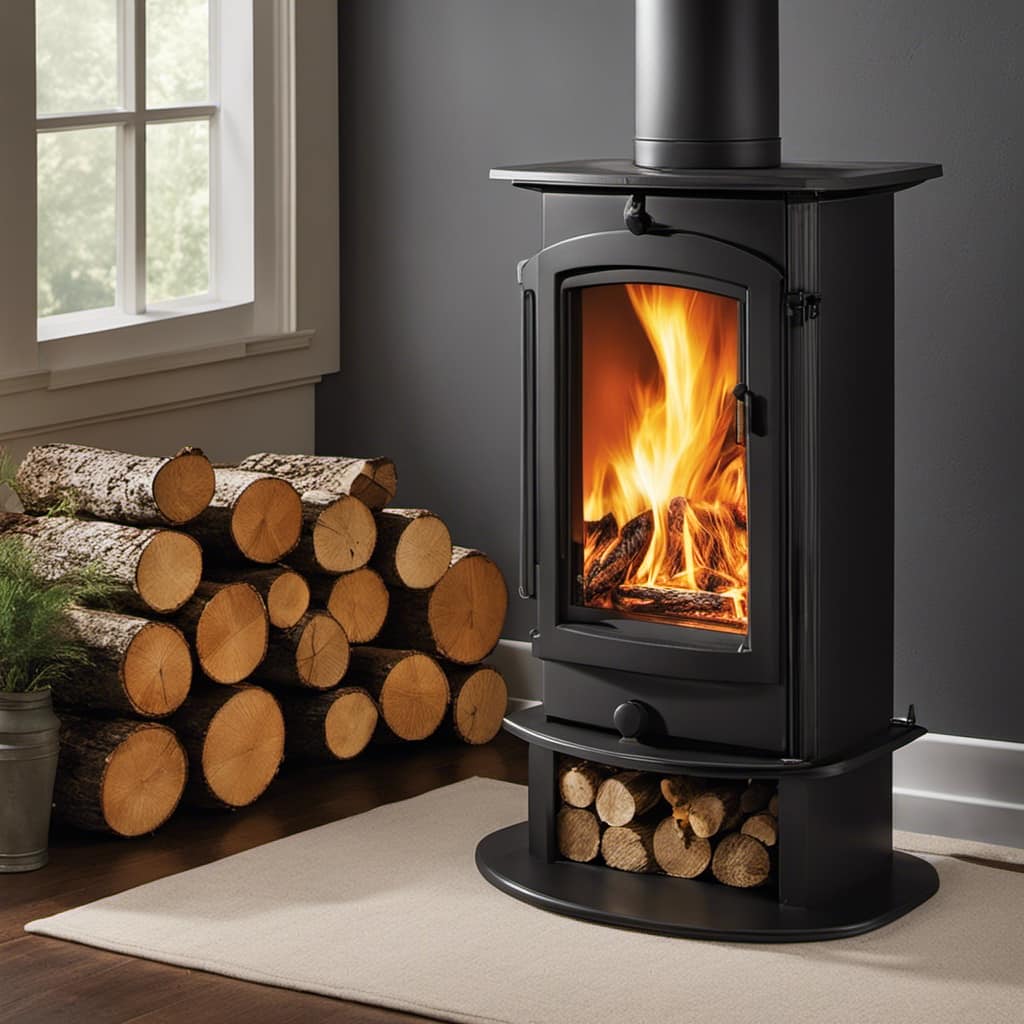
Another option is installing a chimney cap. This not only protects the chimney from debris and animals, but it also helps to create a positive pressure inside the chimney, which can counteract the negative pressure caused by strong winds.
Maintenance and Troubleshooting Tips
Having regular maintenance and troubleshooting tips can greatly help in ensuring the proper functioning of a wood stove.
When it comes to common downdraft problems, one of the most effective solutions is to clean the chimney thoroughly. Over time, soot and creosote can accumulate in the chimney, obstructing the flow of smoke and causing downdrafts. To combat this, effective chimney cleaning techniques involve using brushes and rods to scrape away the buildup.
It’s important to remove any debris, such as leaves or bird nests, from the chimney cap as well.
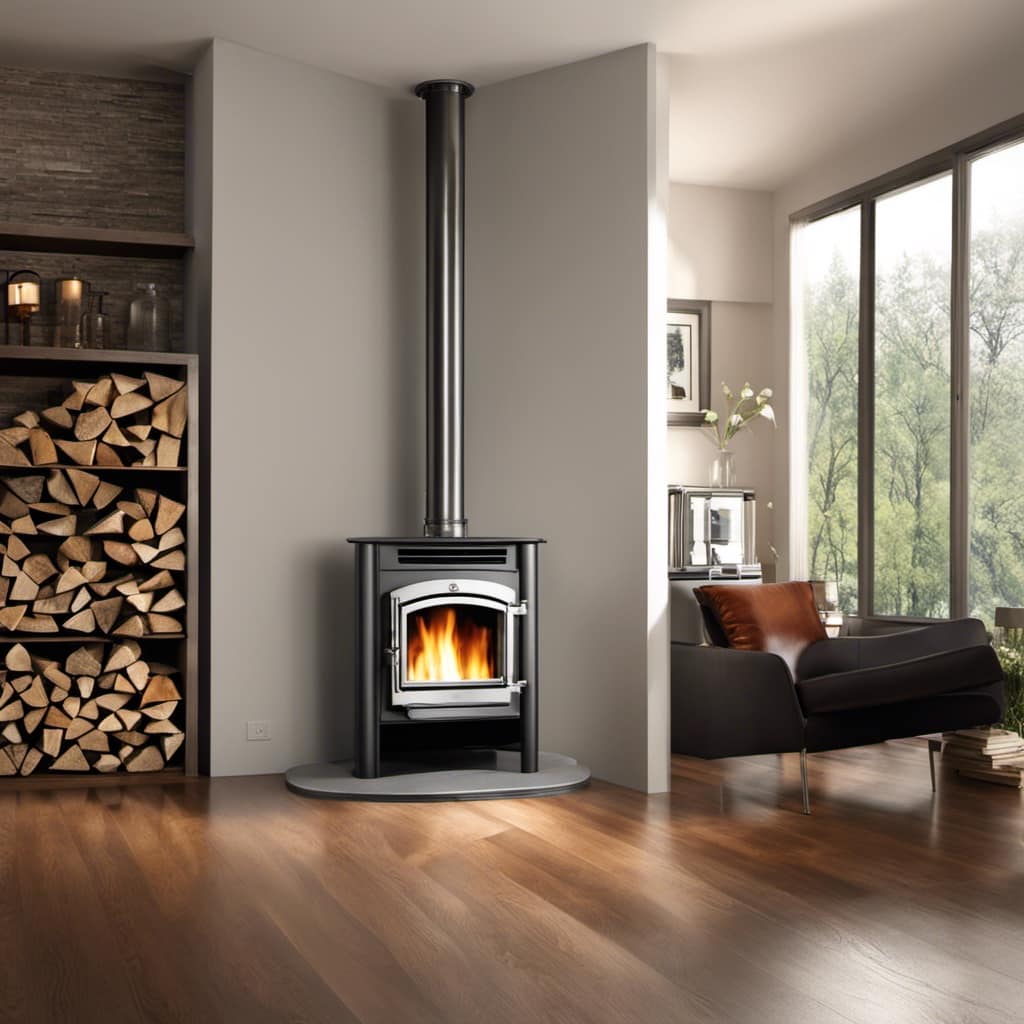
Additionally, ensuring that the damper is fully open while the fire is burning can help create a strong upward draft, preventing downdrafts from occurring.
Can Understanding Downdraft Wood Stoves Help Prevent Them?
Understanding the downdraft wood stove definition is essential for preventing potential issues. A downdraft wood stove operates by drawing air from the top and venting it out through the bottom, which can result in smoke accumulation. Knowing how it functions can help in avoiding downdraft-related problems.
Frequently Asked Questions
How Long Does It Typically Take to Fix a Downdraft Issue in a Wood Stove?
Fixing a downdraft issue in a wood stove can vary in time depending on the cause. Troubleshooting involves checking for air leaks, adjusting damper settings, and ensuring proper chimney height and insulation.
Can Downdrafts in a Wood Stove Cause Any Other Problems Besides Smoke Filling the Room?
Downdrafts in a wood stove can cause more than just smoke. They can lead to poor combustion, reduced heat output, and increased creosote buildup. Troubleshooting tips include adjusting damper settings and using a chimney cap.
Are Downdrafts More Common in Certain Types of Wood Stoves?
Certain types of wood stoves are more prone to downdrafts due to their design and ventilation systems. However, there are solutions to prevent downdrafts, such as installing a chimney cap or using a draft inducer.
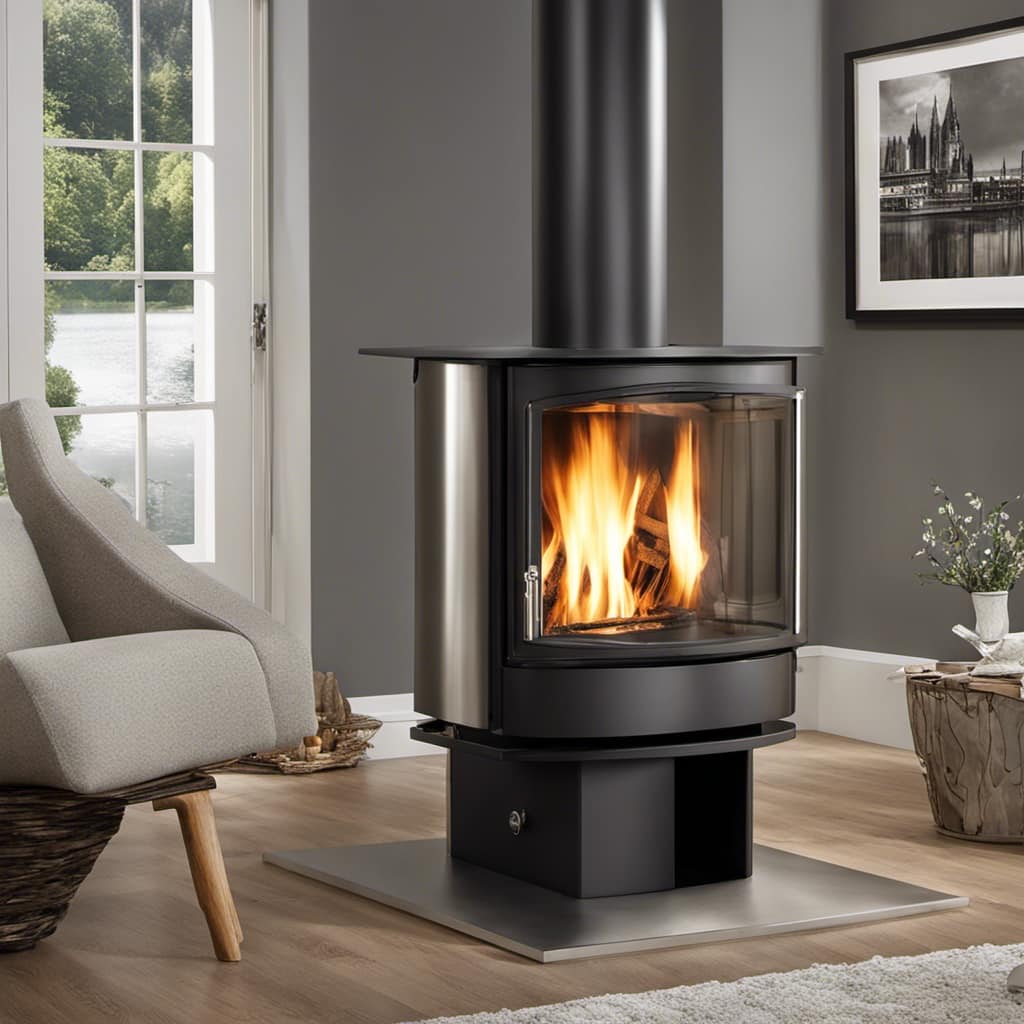
Can a Downdraft Issue Be Caused by a Blockage in the Chimney?
Yes, a blockage in the chimney can cause a downdraft issue in a wood stove. To troubleshoot, check for debris or creosote buildup, clear any obstructions, and ensure proper ventilation for optimal airflow.
Are There Any Specific Weather Conditions That Can Worsen Downdrafts in a Wood Stove?
Weather conditions worsen downdrafts in a wood stove. Troubleshooting downdrafts requires understanding how wind speed, direction, and atmospheric pressure affect airflow. Properly sealing the stove and chimney can help alleviate the issue.
Conclusion
In conclusion, preventing downdrafts in a wood stove requires a thorough understanding of the causes and effective strategies to address them.
By evaluating your wood stove setup, making essential ventilation adjustments, and employing wind blocking techniques, you can ensure optimal performance and minimize downdraft occurrences.
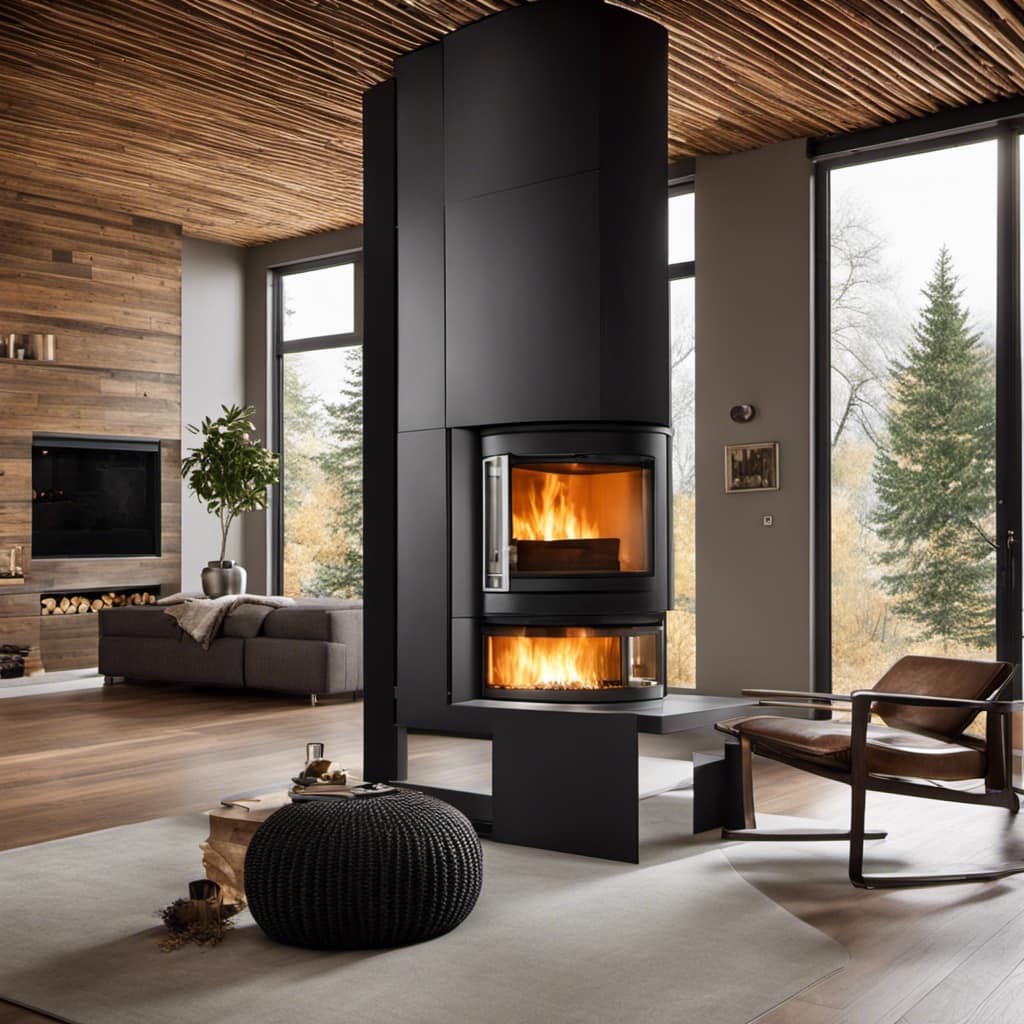
Regular maintenance and troubleshooting are also crucial in maintaining a functional wood stove.
Remember, just like a well-tuned instrument, a properly functioning wood stove can provide warmth and comfort, creating a cozy atmosphere symbolizing a harmonious connection with nature.
Growing up surrounded by the vast beauty of nature, Sierra was always drawn to the call of the wild. While others sought the comfort of the familiar, she ventured out, embracing the unpredictable and finding stories in the heartbeat of nature.
At the epicenter of every remarkable venture lies a dynamic team—a fusion of diverse talents, visions, and passions. The essence of Best Small Wood Stoves is crafted and refined by such a trio: Sierra, Logan, and Terra. Their collective expertise has transformed the platform into a leading authority on small wood stoves, radiating warmth and knowledge in equal measure.


